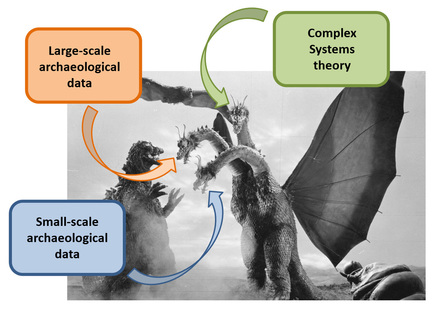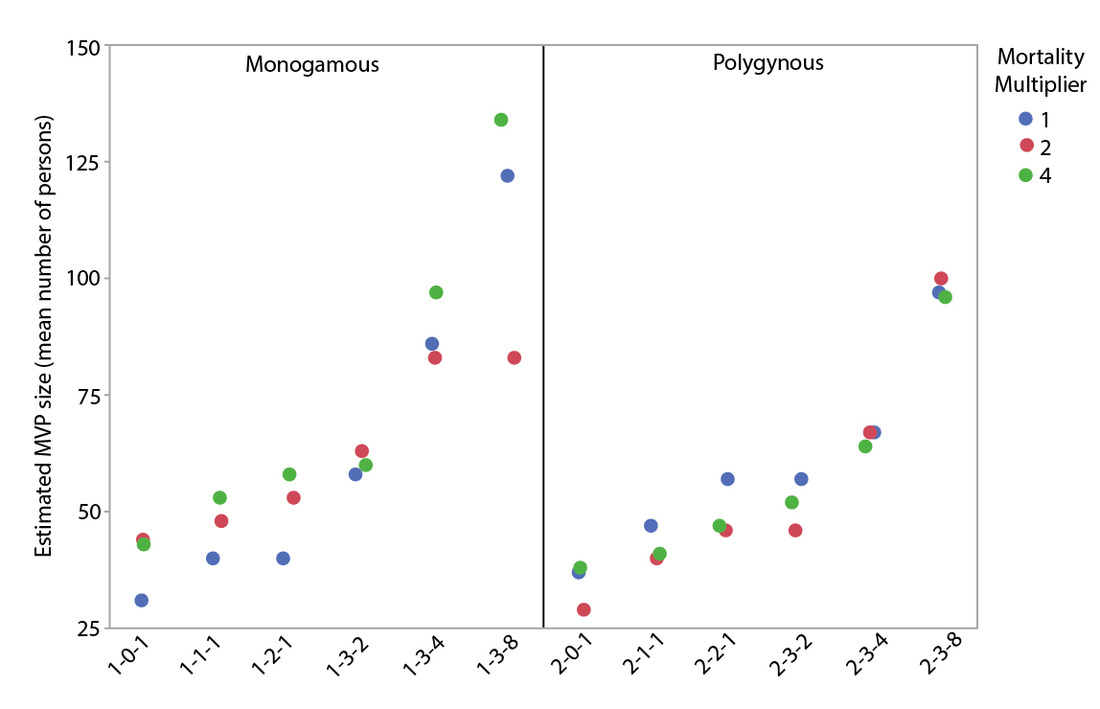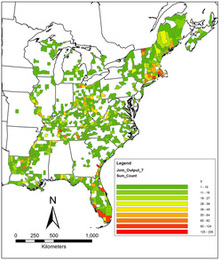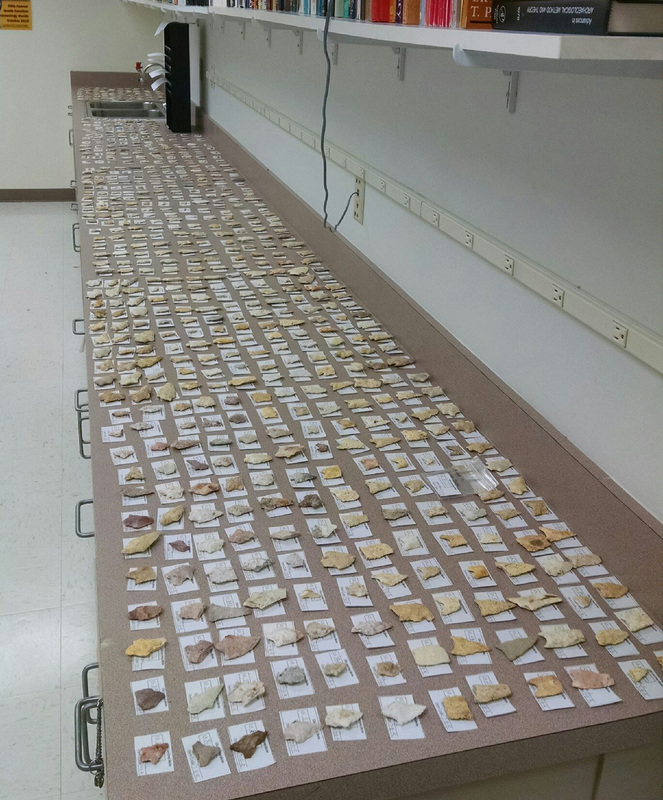
At the beginning of the summer I spent a little time in the field doing some preliminary excavation work at a site that contains (minimally) an intact Archaic component buried about 1.9 meters below the surface (see this quick summary). Based on the general pattern here in the Carolina Piedmont and a couple of projectile points recovered from the slump at the base of the profile, my guess is that buried cultural zone dates to the Middle Archaic period (i.e., about 8000-5000 years ago).
My daughter washed some of the artifacts from the site over the summer, and I've now got an undergraduate student working on finishing up the washing before moving on to cataloging and labeling. Once the lithics are labeled we'll be able to spread everything out and start fitting the quartz chipping debris back together. Because I piece-plotted the large majority of the lithic debris, fitting it back together will help us understand how the deposit was created. I'm hoping we can get some good insights into the very small-scale behaviors that created the lithic deposit (i.e.,perhaps the excavated portion of the deposit was created by just one or two people over the course of less than an hour).

Some parts of my quest to assemble several different large-scale datasets are creeping along, some are moving forward nicely, and some are still on pause.
| In the "creeping along" department is the Eastern Woodlands Radiocarbon Compilation. My daughter did some work on the bibliography over the summer, so that was helpful. I'm still missing data from big chunks of the Southeast and Midwest. I've got some sources in mind to fill some of those gaps, and I've also got a list of co-conspirators. Our plan is to combine everything we've got ASAP and make it available ASAP. I don't really have a timeline in mind for doing that, but for selfish reasons I'm going to try to make it sooner rather than later: I'm going to be using information from the radiocarbon compilation in the paper I'm going to give at this year's SEAC meeting in October. So . . Georgia, Alabama, Arkansas, Missouri, Indiana, Illinois . . . I'll be coming for you. |
| I've got two undergraduate students working on processing the Larry Strong Collection, a large collection of artifacts (mostly chipped stone projectile points) from Allendale County, South Carolina. Mr. Strong, who gathered the materials himself over the course of decades, donated the collection to SCIAA in the 1990's. Large surface collections such as this have significant research potential. I'm most interested in this collection for two reasons: (1) it provides a large sample of Kirk points from a single geographical area made from a single raw material, improving the possibility of teasing apart functional, stylistic, and temporal dimensions of variability (the large majority of 3D models of Kirk points I've produced so far have come from the Larry Strong collection for just this reason); (2) it provides a basis for making robust statements about the relative frequencies of various point types. When you have an n in the many thousands, you can have some confidence that the patterns you're seeing (such as drop in the numbers of points following the Kirk Horizon) are real. That will also factor into my SEAC paper. Curation of the Larry Strong collection is being funded by a grant from the Archaeological Research Trust. |
| Finally, in the "paused" category there is the Eastern Woodlands Household Archaeology Data Project. That effort has been on hold since early last year (I have money to support it and I had an assistant hired, but she moved on to a greener pasture). I'd really like to get this going again but I need to find someone who can work on it more-or-less independently. And I need a bit more office furniture and another computer. Hopefully I can get the EWHADP moving again after things stabilize with my new crop of employees and I have time to take a trip to the surplus building and see what I can scrape up. |
Complex systems theory is what will make it possible to bridge the small and large scales of data that I'm collecting. Last year, I invested some effort into transferring my latest computer model (FN3_D_V3) into Repast Simphony and getting it working. I also started building a brand new, simpler model to look at equifinality issues associated with interpreting patterns of lithic transport (specifically to address the question of whether or not we can differentiate patterns of transport produced via group mobility, personal mobility between groups, and exchange).
As it currently sits, the FN3_D_V3 model is mainly demographic, lacking a spatial component. Over the summer I used it to produce data relevant to understanding the minimum viable population (MVP) size of human groups. Those data, which I'm currently in the process of analyzing, suggest to me that the "magic number of 500" is probably much too large: I have yet to find evidence in my data that human populations limited to about 150 people are not demographically viable over spans of several hundred years even under constrained marriage rules. But I've just started the analysis, so we'll see. I submitted a paper on this topic years ago with a much cruder model and didn't have the stomach to attempt to use that model to address the reviewers' comments. I'm hoping to utilize much of the background and structure of that earlier paper and produce a new draft for submission quickly. I also plan to put the FN3_D_V3 code online here and at OpenABM.org once I get it cleaned up a bit. I also discuss this model in a paper in a new edited volume titled Uncertainty and Sensitivity Analysis in Archaeological Computational Modeling (edited by Marieka Brouwer Burg, Hans Peeters, and William Lovis).






 RSS Feed
RSS Feed
